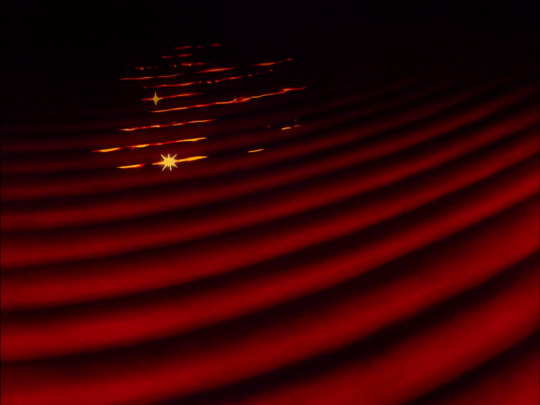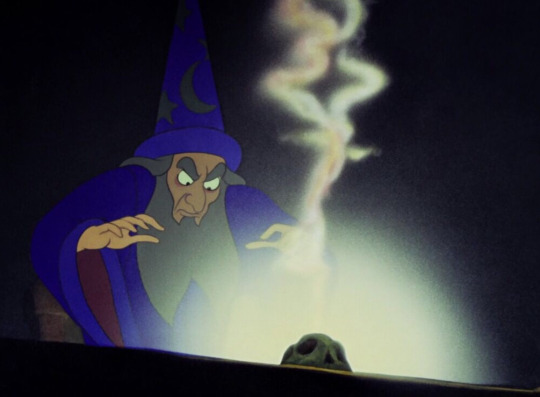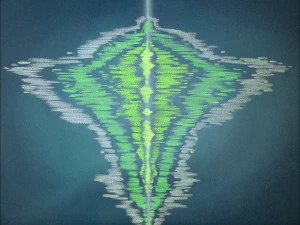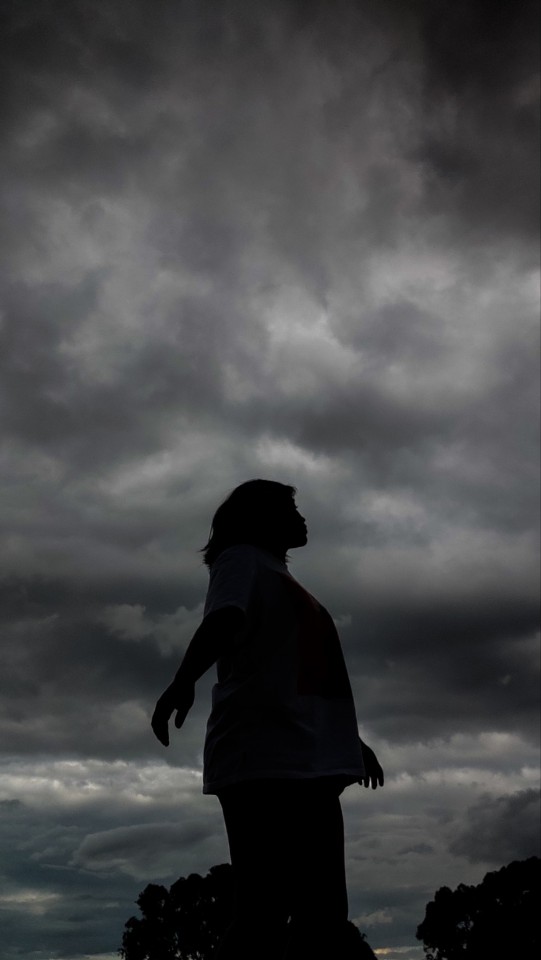#johan sebastian bach
Text
I just realized something about Glass Onion and the way it’s structured, and like everything else in the movie it was told to us in the start:
(GLASS ONION SPOILERS AHEAD)
… it’s a fugue. The movie is a Fugue.
During the puzzle box sequence when the music box puzzle opens, Yo Yo Ma tells Peg that the music they’re hearing is Bach’s “Little Fugue in G Minor” he explains:
“A fugue is a beautiful musical puzzle based on just one tune. And when you layer this tune on top of itself, it starts to change and turn into a beautiful new structure.”
Right in front of our eyes, Rian Johnson just told us how the movie was going to go. It starts out with a simple tune, your classic murder mystery setup much like the Clue movie and half of the mysteries Agatha Christie was famous for writing. We meet the eccentric characters, a murder happens, everyone runs around for a while, and the detective seems ready to tell us whodunit…
And then the movie starts over again. The tune is the same, but layered on top of itself with new context and a different point of view. Every new scene from Helen or Benoit’s perspective changes our perspective on the previous half of the movie, scene by scene. This new layer of the film adds to it and forms a beautiful new structure itself.
Addendum: the opening shots of each act also parallel each other. The first half begins with the start of Bach’s Little Fugue as we are introduced to Claire at her home when her puzzle box is delivered, and then we hear the fugue again but further on in the piece when Helen delivers her box to Benoit Blanc in the second half.
UPDATE: Having seen Rian Johnson’s audio commentary of the film, he confirmed that it was intentional! VINDICATION!!!

#knives out#glass onion#benoit blanc#johan sebastian bach#little fugue in g minor#daniella monet#daniel craig#Rian Johnson you did it again you clever motherfucker#now make Knives Out 3 a muppet movie with the whole cast being muppets except for Benoit Blanc
5K notes
·
View notes
Text
J.S. Bach - Concerto for Oboe, Violin, Strings and Basso Continuo in D minor
149 notes
·
View notes
Text

March 2024
#music#design#talking heads#vitamin c#fiona apple#rita lee#prince#nathy peluso#janelle monae#cat power#the cardigans#pixies#fernanda abreu#britney spears#cocorosie#st. vincent#blur#blondie#a tribe called quest#the beatles#rihanna#stereolab#milton nascimento#clube da esquina#janet jackson#aphex twin#johan sebastian bach#bach#heitor villa lobos#the smashing pumpkins
9 notes
·
View notes
Text
Friedemann Bach


picture based on the film of the same name starring Gustaf Gründgens
13 notes
·
View notes
Text

Check out my Classical Music Playlist for Easter!
#js bach#johan sebastian bach#easter#easter playlist#classical music playlist#Ai generated#fever dream
6 notes
·
View notes
Text
(Archive) Animated movie of the day: Fantasia (1940)
Originally posted: January 4th, 2022
Walter Elias Disney, a controversial man in life and legacy. A businessman at heart, selling an illusion to audiences he so called magic, and tried to hide many of his lesser traits and allegiances throughout his life. Nonetheless, if there's one thing I can actually admire about the man is that he respected animation as a medium, and this is reflected in one of his passion projects: the unprecedented masterpiece that is Fantasia.
A joint work between the Walt Disney company, professional critic Deems Taylor as the Master of Ceremonies and Leopold Stokowski in the direction of the Philadelphia Orchestra, this anthology of classical music with animation of different styles and flavors ranges from abstract and surreal imagery, to the whimsical, frightening and sublime when it comes to the more defined storytelling of other segments. Music from Bach, Tchaikovsky, Dukas, Stravinsky, Bethooven, Ponchielli and Mussorgksy is featured, each as their own dedicated short, along with a small intermission where a sound track is given characterization.
The end result is a highly varied compilation of shorts with both subtle and stark differences in art direction, and a very experimental approach to what animation is about. In many, many ways it was impressively ahead of it's time, which only makes it's dissapointing performance at the box office back in the day all the more saddening.
This isn't to say everything about it is timeless or feels contemporary. While still a remarkable achievement of animation, where just short of 80 years later it's still engrossing and impressive, instances like the now cut character of Sunflower in the Pastoral Symphony segment reflect the ugly, racist side of American culture at the time. There's other less insulting but still dated bits, like how Taylor claims nobody performs the Nutcracker ballet anymore. Yeah, right.
Even so, for any animation enthusiast it's a must watch.

Honestly, this movie gives so much to talk about for an animation enthusiast. I think it warrants writing some thoughts about each segment.
Toccata and Fugue in D Minor(Johann Sebastian Bach): A powerful musical piece to start, but visually speaking it's not the strongest opening. While I do appreciate(immensely I might add) that Disney did NOT go for the stereotyped scary imagery associated with this piece but instead something more sublime (given the dynamic range the toccata actually offers), the abstract imagery doesn't necessarily lend anything substantial to the music, even when it goes from dark places to the very heavens. That is, when the animation actually starts, since a not so small segment of the short is the performers shot in silhouette. Stokowski's arrangement of the piece isn't the most evocative version of this musical milestone either.
Still, on a technical level, the animation is remarkable, and given the significant shifts in the musical structure they did what they could.


---
Nutcracker suite(Pyotr Ilyich Tchaikovsky): While the narrative is less abstract, it's certainly not very defined either. The animation, however, is much more evocative and beautiful to look at, with soft movements of ballet like quality; all too fitting for the piece.
Given it is associated to a narrative that is already well defined, the animators pretty much gave themselves a challenge by pursuing a significantly different direction that, while still using imagery related to fairies, it has a focus entirely put on the beauty of nature. Giving flowers and mushrooms alike anthropomorphic qualities but also allowing them to just move at the pace of the wind, the effects animation here is as stunning as it is educational for any aspiring animator. Colorful and soft, it's just a visual delight.


---
The Sorcerer's Apprentice(Paul Dukas): By far the most popular and well known segment of the film, this short based on a poem from Goethe puts Mickey Mouse in the role of said apprentice under the guide of Yen Sid(subtle reference right there). The irony of the impressionist piece being the first one to get a proper narrative aside, this short is still as charming as ever was.
While the effects animation isn't any less remarkable(in fact, my hat goes off for all those involved in the water animation of this segment), the pressence of Mickey Mouse and the broom make the character animation be the star of the show this time, and it still holds up. It goes all the way to show the power of well composed body language that you can follow the story even without Taylor's prior introduction.


---
Rite of the Spring(Igor Fyodorovich Stravinsky): A piece from the only composer that was still alive to see the film(who also GREATLY disliked the interpretation of his piece, calling the performance execrable) this is a valiant effort of wordless stoytelling with creatures of minimal anthropomorphic qualities.
While Taylor's introduction already hammers in the era in which this was made(he has to tiptoe around calling scientific observations "facts" to not get flak from conservative Christians), the representation of dinosaurs is anachronistic and dated as well, so is the vagueness of what destroyed them(the crater of the meteor that caused their mass extinction wasn't discovered until 1978).
Still. the segment creates genuine feelings of menace from the Tyrannosaurus Rex, and the effects animation is still remarkable(special mention goes to the magma and the smoke, even though fire doesn't look quite right in some shots). It does what it sets to do in presenting the power of nature.


---
Intermission/Meet the Soundtrack: The brief jazz number by the orchestra is nice, and honestly, the Sound track is pretty adorable for a non descriptive collection of shapes. It's also impressive how they managed to give different sounds visual abstract equivalents.


---
Pastoral Symphony(Ludwig van Beethoven): The only part of Disney's Movie canon to feature female nudity along with the Night on Bald Mountain segment(at least until later rereleases), it's whimsical depiction of Greek Mythology still manages to be more accurate to the source material than future endeavors of the company such as Hercules, humorously enough. The greek gods weren't nice people, and this segment has some fun with that(remember kids, Zeus is a jerk). The extremely simple love story between the centaurs is still wholesome though, and the imagery is very creative.
The animation complexity of this short lead to some small animation errors but you're not gonna notice if you're not looking for them. It also has in my opinion the most beautiful backgrounds of the film, rivalled only by some segments of the naturalistic beauty of the Nutcracker Suite.

---
Dance of the Hours(Amilcare Ponchielli): Charmingly innocent in a way that it's not seen very often anymore, it uses it's ballet roots in a fairly literal fashion by making a ballet number with different species of animals representing different hours of the day. The body language of these animals is just brilliant, they're expressive, carry a well defined movement to each one(that isn't realistic but definitely distinctive) and there's something inherently comical about how they dance, even when they do it effectively.
Honestly given the premise of the ballet this is the one short where I'd have gone abstract. I can't complain though, since the humorous gags and silly imagery just make it a sincerely funny experience, albeit not the most remarkable among the anthology(plus, female ostriches don't have the black and white plumage, but let's not get too nitpicky here).


---
Night on Bald Mountain/Ave Maria(Modest Petrovich Mussorgsky/ Franz Peter Schubert): Try to act surprised when I tell you the spooky segment is my favorite part of the movie. At the same time, however, I think it's warranted in this case. Horror is not something animation was known for back in the day. Even if movies like Pinocchio had some remarkably dark imagery, the medium in general was being pushed towards this kid oriented market, so this short was in many ways daring. And the end result both hits the mark with the fear and also happens to deliver one of the more complete narratives in the film. It's not just about the spooks, but the catharsis afterwards.
Chernabog(or as it is referred by Taylor, Satan himself) has such a commanding presence it's overwhelming. Even if you don't find him scary you WILL remember his face, full of wickedness and evil(Vladimir Tytla's animation of the character is one of the biggest achievements in the entire film, which is saying something). The imagery is adequately hellish as well, thanks to a masterful art direction that brings the shadows of Walpurgis night to life. The use of experimental animation techniques helped as well, with the ghosts requiring some clever use of distorted mirrors to create. And the release from the nightmare with the Ave Maria, which was the most demanding shot for the animators at the time(and not just on this project but maybe in animation as a whole at that point)? The perfect cap for a movie that made history for good reason.




So yeah, that's Fantasia. Man, that was a long one.
#roskirambles#animated films#walt disney#johan sebastian bach#pyotr ilyich tchaikovsky#paul dukas#johan wolfgang von goethe#igor stravinsky#ludwig van beethoven#amilcare ponchielli#modest mussorgsky#franz schubert#mickey mouse#chernabog#fantasia#greek mythology#leopold stokowski#deems taylor
4 notes
·
View notes
Text
Veja "Bach - St. Matthew Passion: Overture, Erbam Dich (...) Final (Ct.rc.: Otto Klemperer / Remastered)" no YouTube
youtube
8 notes
·
View notes
Video
youtube
J. S. Bach: Sarabande from Partita B♭ Major BWV 825 (Masako Ohta)
7 notes
·
View notes
Text

Kuşları salarken izlediğim film
Kuşkusuz yıkılan evleri vardı
Zincirleri otomobillerin
Metafizik sanrıları yönetirdi geceyi
Yağlı ayak, mermerde hayaller kurarken
Disepsi gelişti.
Niçin yaş betona hayaller yazarsın?
Niçin kurutursun düzeltmeden?
Eski insanım benim!
Çağ dışı hayallerini mum gibi erit,
Akıt üzerine celladın,
Gözlerini belirt!
4 notes
·
View notes
Text
BACH IS A LITTLE BITCH THERE I FUCKING SAID IT
#his music SOUNDS LIKE IT WAS WRITTEN BY A DOUCHE#sorry I just hate bach#johan sebastian bach#to be specific#his son is alright
1 note
·
View note
Text

Te puedo gritar, un "Te amo" callado, por verte a mi lado yo puedo esperar, un día, unos meses, un año o un siglo, que al fin yo he de amarte una eternidad.
Amorcito mío, mío tan especial.
#johan sebastian bach#felicidad#music#sentimientos#amor#photography#recuerdos#writers#spotify#volver#pensamientos#el chico que me gusta
3 notes
·
View notes
Text
Bach is a terrible composer - BWV 1.
https://www.youtube.com/watch?v=7fNaMOtVUc4
Although the BWV is not chronological, the first piece is absolutely representative of the Bachian blueprint: a binary comprised of bog-standard melodies, not to mention harmonies, and a dreadful “pitch porridge”, ostensibly “Mathematical” or “technical” passages whose melodic and harmonic qualities converge in perfect cacophony. The latter being, mercifully, totally absent in this piece. So...what exactly distinguishes this cantata from the countless others made by other composers? Not even “nothing”, I fear.
2 notes
·
View notes
Text

From beyond the hoard...
David Blum's Casals and the Art of Interpretation
This 1977 pseudo-biography is a must-read for every musician or music teacher. Each chapter gives an insightful look into how musicians can interpret the music rather than just play the notes on the page.
If you don't know, Pablo Casals (1876-1973) was a Spanish cellist, conductor, educator, and above all, musician. His success as a performer can be attributed to his ideas on interpretation, which Blum masterfully illustrates in this book.
The first chapter, aptly named "The First Principle," is an exploration of something that the western musician might not think of. Xie He's principles of painting were developed in the fifth century in China, and the first one is particularly important to musicians of the modern day; creativity, or "spirit-resonance". This concept is explored in terms of putting your feeling and spirit through the instrument (instrument here including the voice).
The second chapter, "Finding the Design," is an exploration of deviating from the score. Casals, and therefore Blum, argues that in looking at the score for performance, we must add to what we see. He states in regard to the second movement of Mozart's Symphony No. 39 in E♭ Major that "Although only piano is written, we must follow the line of the music; we must find the design!" This concept is explored throughout the chapter.
The third chapter, Casals and Bach, is interesting from a musicological point of view as it explores how to play compositions by Johan Sebastian Bach accurately. If one looks at the life and times of Bach, we can see that he was an emotionally passionate person. This, I argue, must show through in his music. Casals agrees with this, saying that his music is subject to interpretation just as all other music is.
Because I am a wind player (and the fact this chapter was not assigned in my music seminar) I skipped chapter four, . While I assume that it is quite good for string players, a string player I am not.
The last chapter, "A Casals Rehearsal: The Pastoral Symphony," is truly mindblowing. It details what Blum observed over "several" rehearsals with Casals of Beethoven's Sixth Symphony. While great, it will only have the intended impact if you have both read the rest of the book and know the Pastoral Symphony well.
Overall, in my opinion, this is a must-read for any musician or music teacher.
#pablo casals#casals#cello#conducting#book review#music#music book#David blum#beethoven#A Casals Rehearsal: The Pastoral Symphony#Casals and the Art of Interpretation#Casals and Bach#johan sebastian bach#bach#piano#symphony#The First Principle
2 notes
·
View notes
Text
Me: Dang, I'd like to be like Bach...
X: A music expert dilf?
Me: No, ✨blind✨
#insert what made you want to lose your seeing privilege#bowigi fanfictions#bach#johan sebastian bach
5 notes
·
View notes
Text
#christian music#christmas 🎄#music of all generations 16#johan sebastian bach#mycosylivingroom#Spotify
2 notes
·
View notes
Text
youtube
Limitarme a escribir que no tuve nada para decir en mi ausencia sería acomodarme a una mentira; No tengo nada en contra de estas (esto es mentira), pero prefiero evitarlas. En cambio, decir que estaba cansado sería verdad; una verdad incompleta, como el cansancio. Insatisfecho entonces, podría inclinarme a mencionar que el origen por el cual hice una cuenta aquí, es el mismo por el cual estoy ausentandome, y luego, inclinarme un poco más para evitar mencionar el origen. O simplemente revelar que, como siempre, me ahogo de proyectos y actividades -sin mencionar los posibles motivos que empujen este comportamiento por respeto-. Y terminar justificando los fragmentos de una gran justificación inacabada apelando al cariño que abrigo por esta comunidad... Esto es lo que puedo decir.
Por otro lado, -por lo que no puedo decir-comparto a Bach: como vocero de un duelo muy reciente que estoy transitando y tratando de evitar...
Es todo.
2 notes
·
View notes